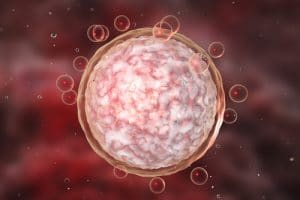Infertility, according to the World Health Organization is “a disease of the reproductive system defined by the failure to achieve a clinical pregnancy after 12 months or more of regular unprotected sexual intercourse.” Female infertility affects women of reproductive age, those between the ages of 15 and 49.
For long, this has been a clinical issue affecting close to 15 percent of couples seeking to have children. Other than the inability to conceive, stillbirths and miscarriages have often been classified as cases of infertility too. This article, however, will primarily focus on discussing the inability to conceive among women of reproductive age.
Causes of Female Infertility
There are several known causes of female infertility such as ovulation problems, old age (often associated with menopause), endometriosis, uterine abnormalities, unhealthy body weight and abnormal cervix mucus, among others. However, much attention has not been paid to the effect of gene mutation on female infertility and early menopause.
A team from the Washington University School of Medicine in St. Louis undertook a study of the gene nuclear envelope membrane protein one (NEMP1) in relation to eye development in frogs. During the study, they accidentally discovered an association between the gene’s mutation and fertility in fruit flies. Studying the NEMP1 gene further, they blocked the gene expression in fruit flies. Interestingly, the results showed that the fruit flies appeared quite healthy, with fully developed eyes but with under-developed reproductive organs.
NEMP1 Gene Mutation and Its Effect on Female Fertility
Research studies have shown that when the gene is missing in organisms, the animals lose their ability to conceive and reproduce. Even though the animals may appear totally healthy, scientists found that their eggs lose quality drastically over a period of time. The rate of degeneration could not be standardized, however, as it varies from one animal to the other.

The study also revealed that the envelope carrying the nucleus in the fruit fly was flat like a floppy balloon. Uniquely, only these nucleic cells were affected while the rest of the cells lived on normally. When scientists further studied these deformed cells, they discovered that the inner nuclear membranes were softer than normal. This further led to the discovery and conclusion that over time, the reduction of the pool of eggs in mice is directly linked to the inability to conceive.
This discovery in the gene of mice and other animals directed the research to human cells. In the quest to achieve the main goal of establishing the correlation between NEMP1 gene mutation and female infertility, the researchers developed human embryonic stem cells. Using CRISP gene editing, these cells were given specific NEMP1 mutations associated with female infertility.
Similar to the diminishing of egg count in animals, there is evidence that when a woman experiences this mutation, her egg number is lowered, leading to early menopause. Research has also shown that the lack of nuclear envelope stiffness can be linked to the death of eggs. The eggs cannot survive without the protection of the firmness of the outer membrane. Although most studies link this directly to early menopause, it is also a primary cause in female infertility.
How can women learn about gene mutation causing female infertility and overcome it?
At the moment, it is not possible to decisively state the methods of treatment for infertility caused by gene mutation. However, there is a lot of information for women to learn about this genetic abnormality and still conceive. They can undergo fertility testing to determine the cause of their infertility. Amazingly, there are many treatments that have been discovered to help in correcting such disorders. For genetic mutations, assisted reproductive technology such as in-vitro fertilization (IVF) can help women conceive.





